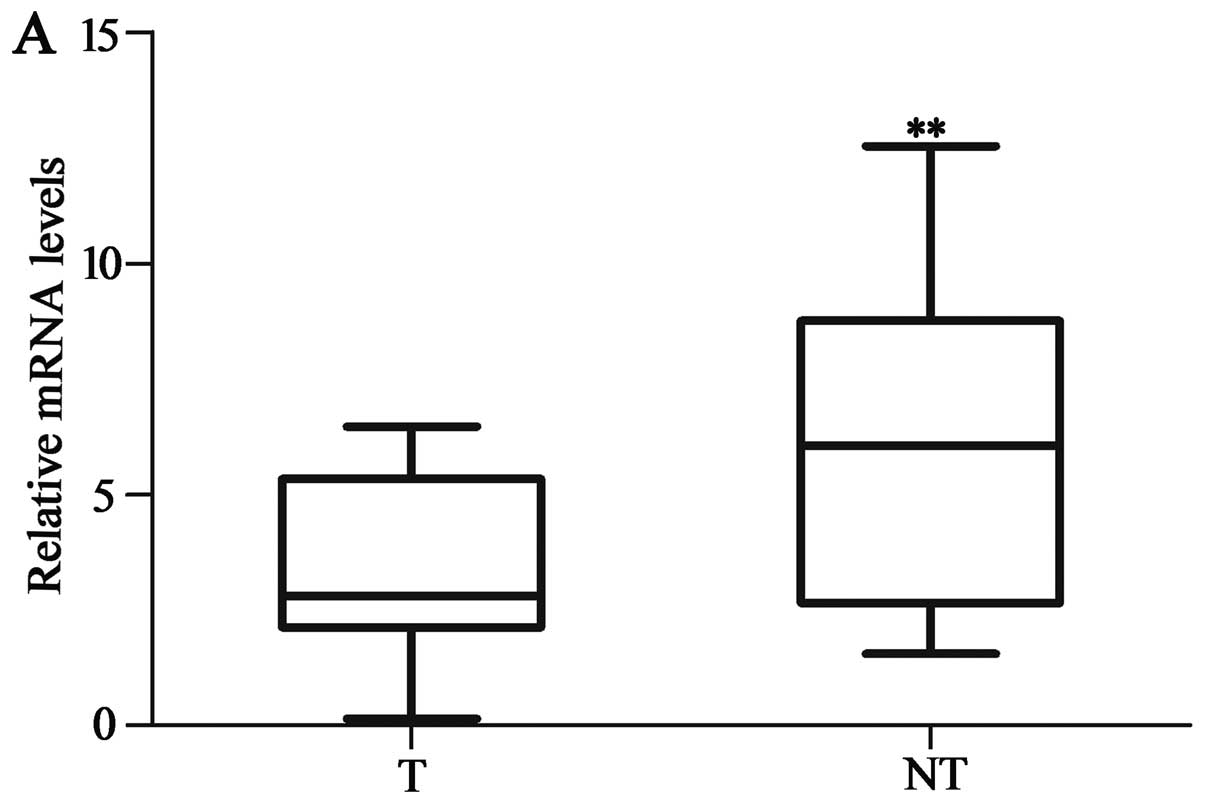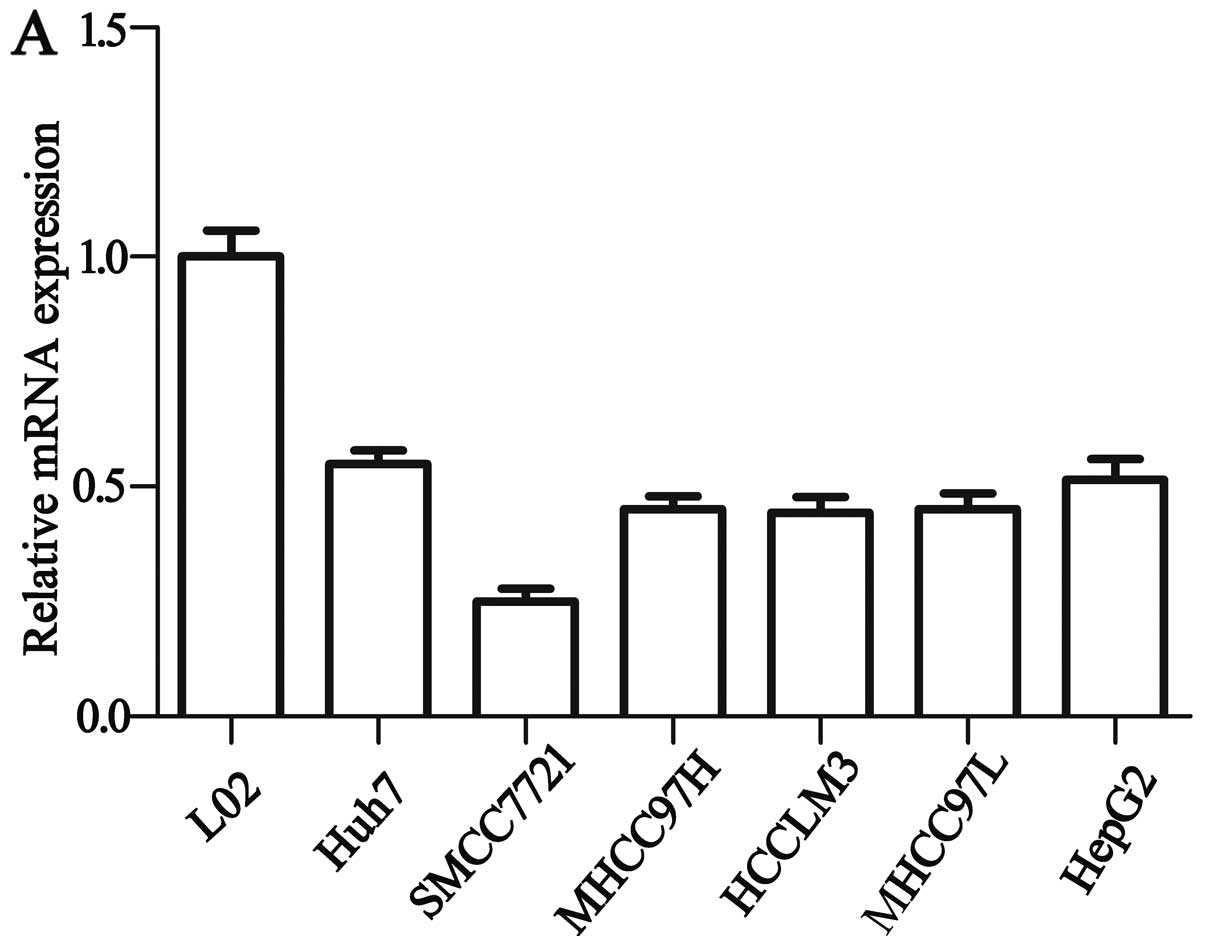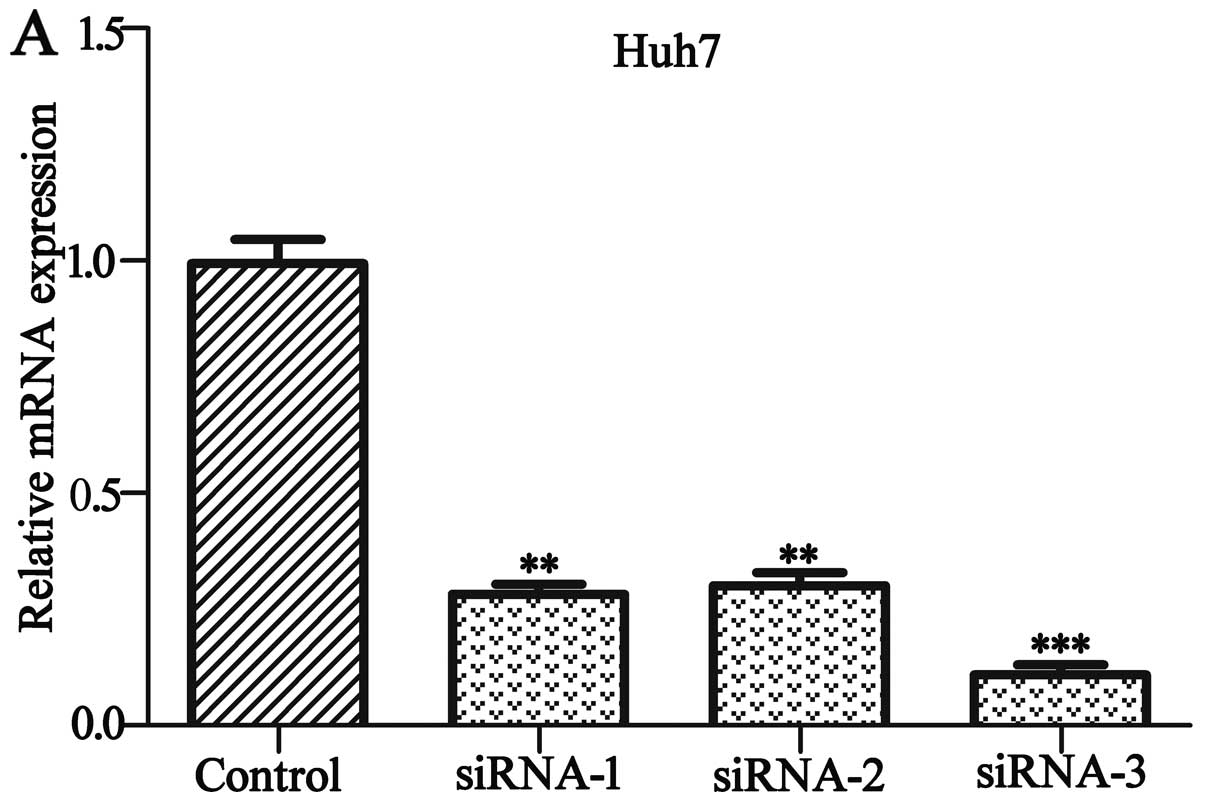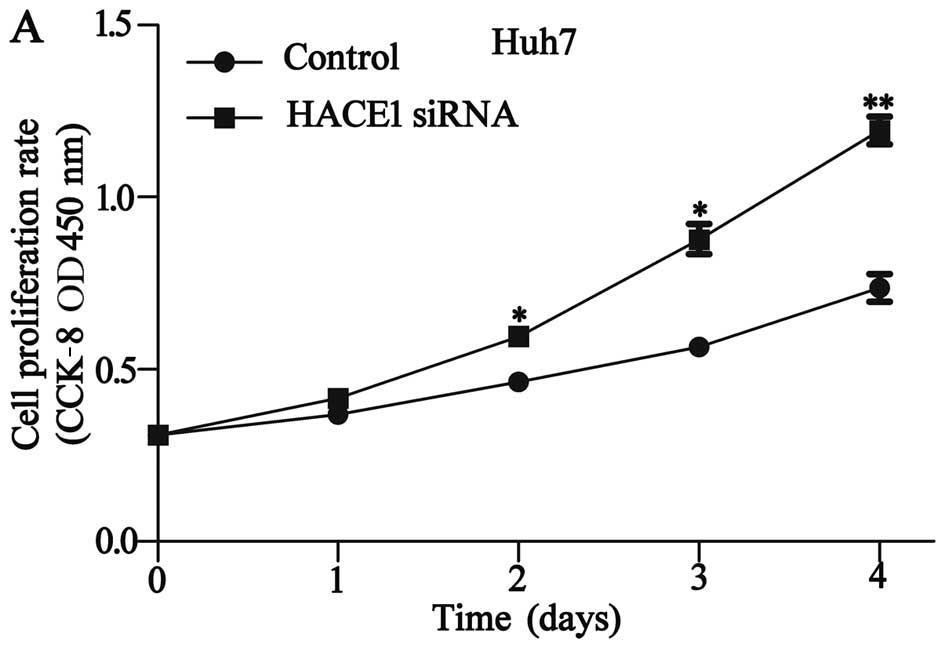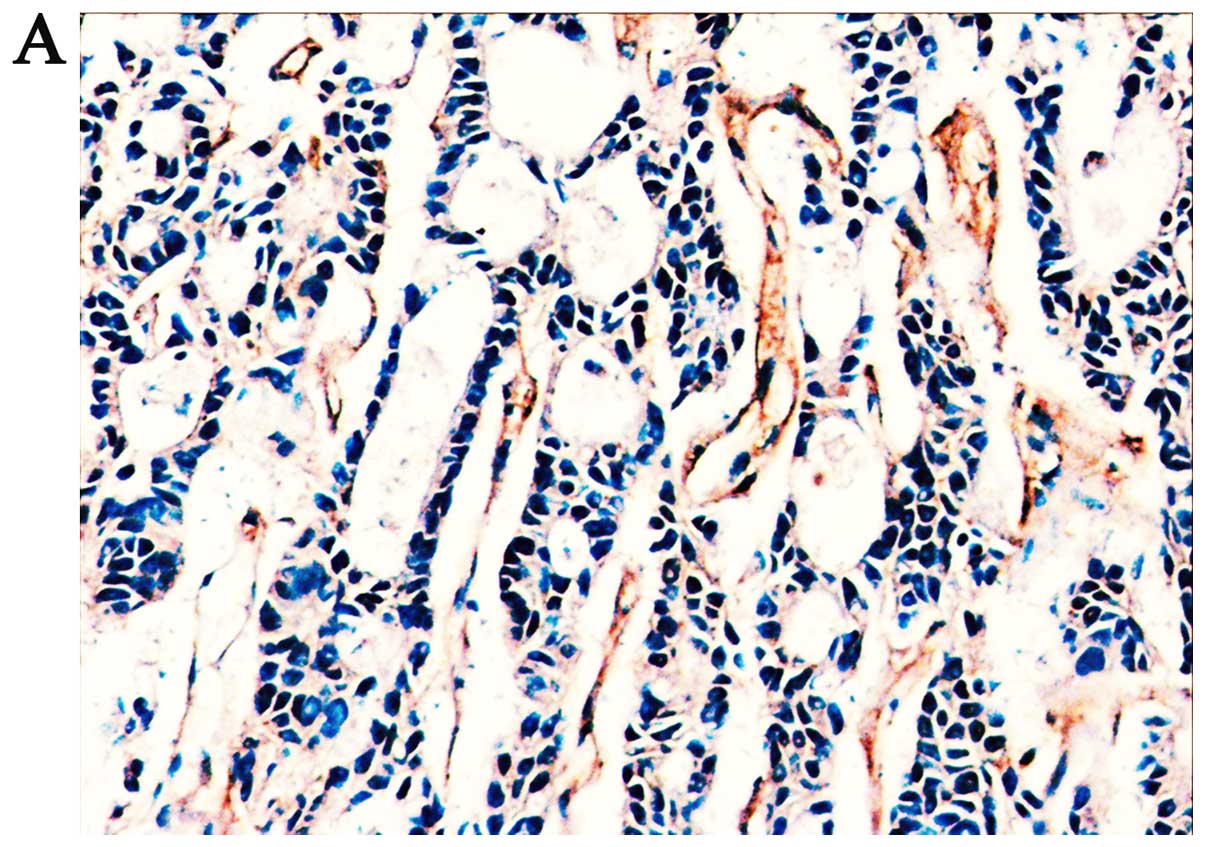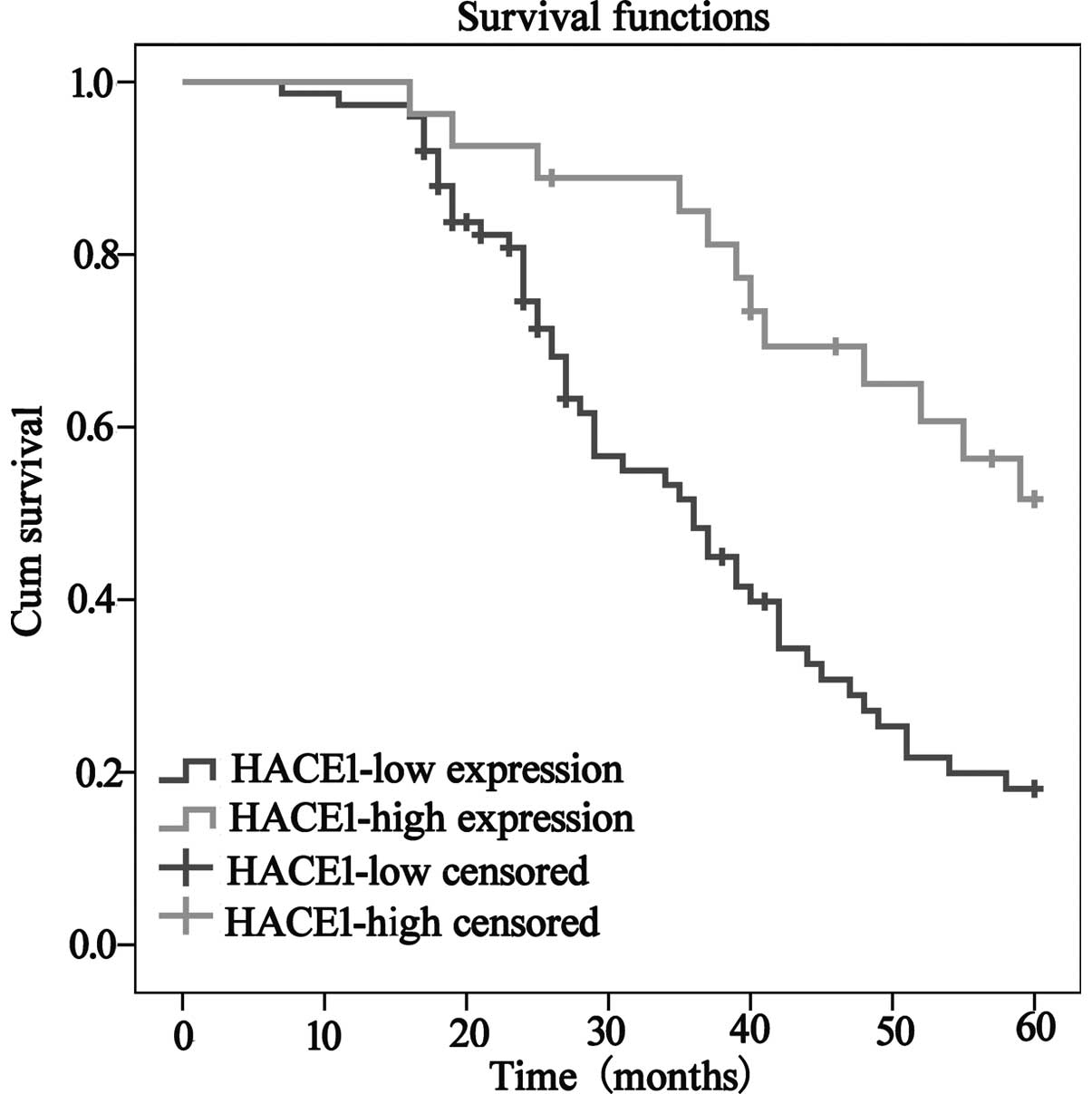|
1
|
Torre LA, Bray F, Siegel RL, Ferlay J,
Lortet-Tieulent J and Jemal A: Global cancer statistics, 2012. CA
Cancer J Clin. 65:87–108. 2015. View Article : Google Scholar : PubMed/NCBI
|
|
2
|
Waller LP, Deshpande V and Pyrsopoulos N:
Hepatocellular carcinoma: A comprehensive review. World J Hepatol.
7:2648–2663. 2015. View Article : Google Scholar : PubMed/NCBI
|
|
3
|
Liccioni A, Reig M and Bruix J: Treatment
of hepatocellular carcinoma. Dig Dis. 32:554–563. 2014. View Article : Google Scholar : PubMed/NCBI
|
|
4
|
Waghray A, Murali AR and Menon KN:
Hepatocellular carcinoma: From diagnosis to treatment. World J
Hepatol. 7:1020–1029. 2015. View Article : Google Scholar : PubMed/NCBI
|
|
5
|
Anglesio MS, Evdokimova V, Melnyk N, Zhang
L, Fernandez CV, Grundy PE, Leach S, Marra MA, Brooks-Wilson AR,
Penninger J, et al: Differential expression of a novel ankyrin
containing E3 ubiquitin-protein ligase, Hace1, in sporadic Wilms'
tumor versus normal kidney. Hum Mol Genet. 13:2061–2074. 2004.
View Article : Google Scholar : PubMed/NCBI
|
|
6
|
Zhang L, Anglesio MS, O'Sullivan M, Zhang
F, Yang G, Sarao R, Mai PN, Cronin S, Hara H, Melnyk N, et al: The
E3 ligase HACE1 is a critical chromosome 6q21 tumor suppressor
involved in multiple cancers. Nat Med. 13:1060–1069. 2007.
View Article : Google Scholar : PubMed/NCBI
|
|
7
|
Qu Y, Dang S and Hou P: Gene methylation
in gastric cancer. Clin Chim Acta. 424:53–65. 2013. View Article : Google Scholar : PubMed/NCBI
|
|
8
|
Sako N, Dessirier V, Bagot M, Bensussan A
and Schmitt C: HACE1, a potential tumor suppressor gene on 6q21, is
not involved in extranodal natural killer/T-cell lymphoma
pathophysiology. Am J Pathol. 184:2899–2907. 2014. View Article : Google Scholar : PubMed/NCBI
|
|
9
|
Liu Z, Chen P, Gao H, Gu Y, Yang J, Peng
H, Xu X, Wang H, Yang M, Liu X, et al: Ubiquitylation of autophagy
receptor Optineurin by HACE1 activates selective autophagy for
tumor suppression. Cancer Cell. 26:106–120. 2014. View Article : Google Scholar : PubMed/NCBI
|
|
10
|
Mettouchi A and Lemichez E: Ubiquitylation
of active Rac1 by the E3 ubiquitin-ligase HACE1. Small GTPases.
3:102–106. 2012. View Article : Google Scholar : PubMed/NCBI
|
|
11
|
Zhang L, Chen X, Sharma P, Moon M, Sheftel
AD, Dawood F, Nghiem MP, Wu J, Li RK, Gramolini AO, et al:
HACE1-dependent protein degradation provides cardiac protection in
response to haemodynamic stress. Nat Commun. 5:34302014.PubMed/NCBI
|
|
12
|
Deng S and Huang C: E3 ubiquitin ligases
in regulating stress fiber, lamellipodium, and focal adhesion
dynamics. Cell Adhes Migr. 8:49–54. 2014. View Article : Google Scholar
|
|
13
|
Castillo-Lluva S, Tan CT, Daugaard M,
Sorensen PH and Malliri A: The tumour suppressor HACE1 controls
cell migration by regulating Rac1 degradation. Oncogene.
32:1735–1742. 2013. View Article : Google Scholar : PubMed/NCBI
|
|
14
|
Goka ET and Lippman ME: Loss of the E3
ubiquitin ligase HACE1 results in enhanced Rac1 signaling
contributing to breast cancer progression. Oncogene. 34:5395–5405.
2015. View Article : Google Scholar : PubMed/NCBI
|
|
15
|
Huang Y, de Reyniès A, de Leval L, Ghazi
B, Martin-Garcia N, Travert M, Bosq J, Brière J, Petit B, Thomas E,
et al: Gene expression profiling identifies emerging oncogenic
pathways operating in extranodal NK/T-cell lymphoma, nasal type.
Blood. 115:1226–1237. 2010. View Article : Google Scholar : PubMed/NCBI
|
|
16
|
Hibi K, Sakata M, Sakuraba K, Shirahata A,
Goto T, Mizukami H, Saito M, Ishibashi K, Kigawa G, Nemoto H, et
al: Aberrant methylation of the HACE1 gene is frequently detected
in advanced colorectal cancer. Anticancer Res 28 (3A). 1581–1584.
2008.
|
|
17
|
Hudson C, Schwanke C, Johnson JP, Elias
AF, Phillips S, Schwalbe T, Tunby M and Xu D: Confirmation of
6q21-6q22.1 deletion in acro-cardio-facial syndrome and further
delineation of this contiguous gene deletion syndrome. Am J Med
Genet A 164A. 2109–2113. 2014. View Article : Google Scholar
|
|
18
|
Wang XC, Zhang JQ, Shen YQ, Miao FQ and
Xie W: Loss of heterozygosity at 6p21.3 underlying HLA class I
downregulation in gastric cancer. J Exp Clin Cancer Res.
25:115–119. 2006.PubMed/NCBI
|
|
19
|
Scheffner M and Kumar S: Mammalian HECT
ubiquitin-protein ligases: Biological and pathophysiological
aspects. Biochim Biophys Acta. 1843:61–74. 2014. View Article : Google Scholar : PubMed/NCBI
|
|
20
|
Stewénius Y, Jin Y, Ora I, Panagopoulos I,
Möller E, Mertens F, Sandstedt B, Alumets J, Akerman M, Merks JH,
et al: High-resolution molecular cytogenetic analysis of Wilms
tumors highlights diagnostic difficulties among small round cell
kidney tumors. Genes Chromosomes Cancer. 47:845–852. 2008.
View Article : Google Scholar : PubMed/NCBI
|
|
21
|
Capasso M, Diskin S, Cimmino F, Acierno G,
Totaro F, Petrosino G, Pezone L, Diamond M, McDaniel L, Hakonarson
H, et al: Common genetic variants in NEFL influence gene expression
and neuroblastoma risk. Cancer Res. 74:6913–6924. 2014. View Article : Google Scholar : PubMed/NCBI
|
|
22
|
Capasso M, Diskin SJ, Totaro F, Longo L,
De Mariano M, Russo R, Cimmino F, Hakonarson H, Tonini GP, Devoto
M, et al: Replication of GWAS-identified neuroblastoma risk loci
strengthens the role of BARD1 and affirms the cumulative effect of
genetic variations on disease susceptibility. Carcinogenesis.
34:605–611. 2013. View Article : Google Scholar : PubMed/NCBI
|
|
23
|
Küçük C, Hu X, Iqbal J, Gaulard P,
Klinkebiel D, Cornish A, Dave BJ and Chan WC: HACE1 is a tumor
suppressor gene candidate in natural killer cell neoplasms. Am J
Pathol. 182:49–55. 2013. View Article : Google Scholar : PubMed/NCBI
|
|
24
|
Gacon G, Mettouchi A and Lemichez E: The
tumor suppressor HACE1 targets Rac1 to ubiquitin-mediated
proteasomal degradatio]. Med Sci (Paris). 28:39–41. 2012.(In
French). View Article : Google Scholar : PubMed/NCBI
|
|
25
|
Lachance V, Degrandmaison J, Marois S,
Robitaille M, Génier S, Nadeau S, Angers S and Parent JL:
Ubiquitylation and activation of a Rab GTPase is promoted by a
β2AR-HACE1 complex. J Cell Sci. 127:111–123. 2014.
View Article : Google Scholar : PubMed/NCBI
|



